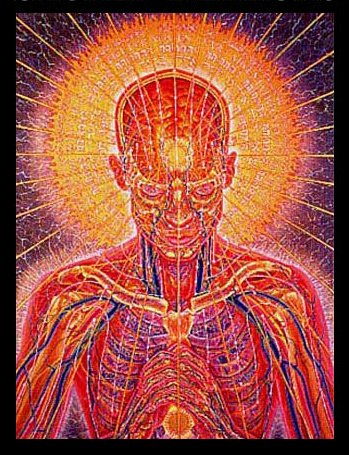
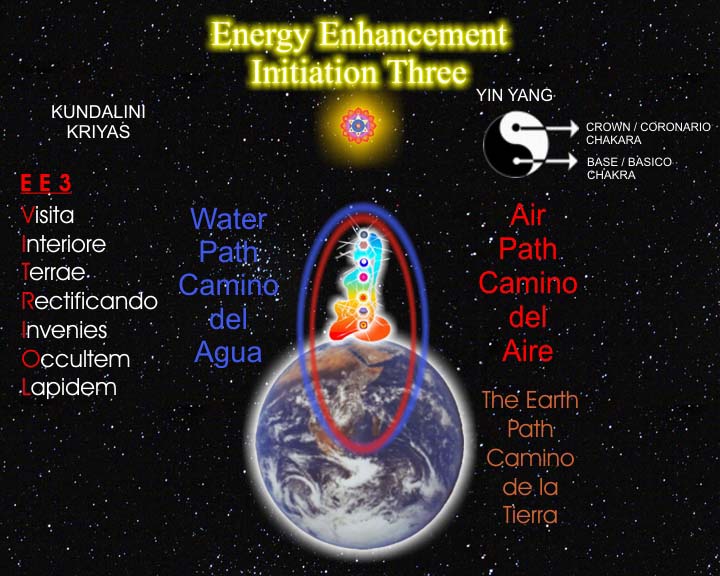
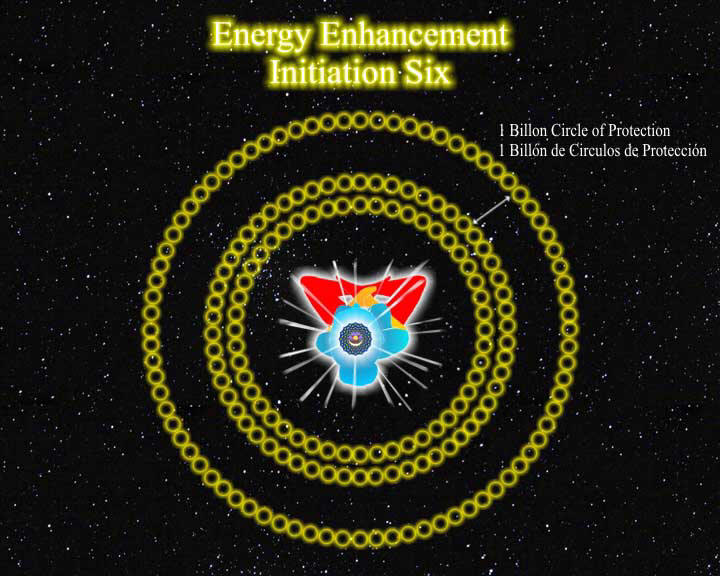
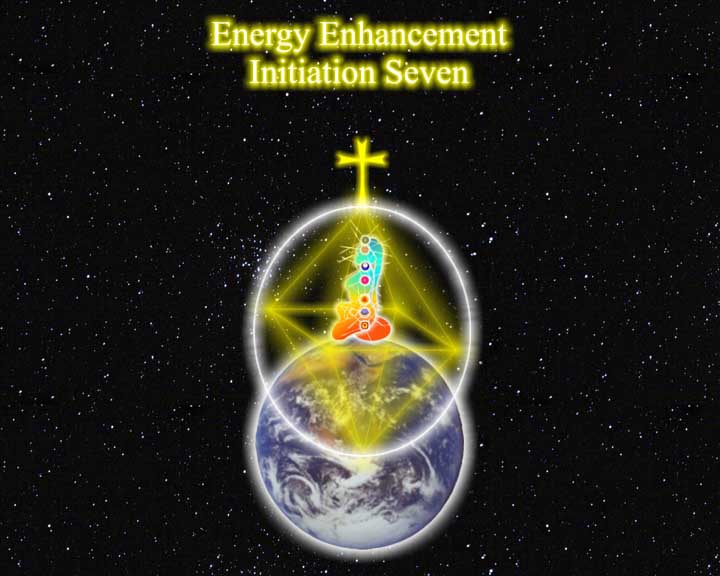
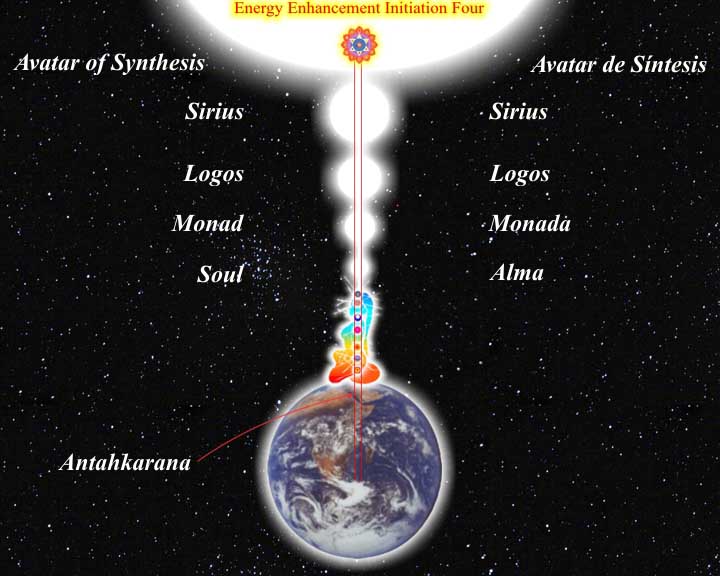
|
ENERGY
|
GAIN ENERGY
APPRENTICE
LEVEL1
|
THE
ENERGY BLOCKAGE REMOVAL
PROCESS
|
THE
KARMA CLEARING
PROCESS
APPRENTICE
LEVEL3
|
MASTERY
OF RELATIONSHIPS
TANTRA
APPRENTICE
LEVEL4
|
2005 AND 2006
|
| SEEDS OF LIGHT FREE INTERNET MAGAZINE. |
|
The
Manipura Chakra.
|
|
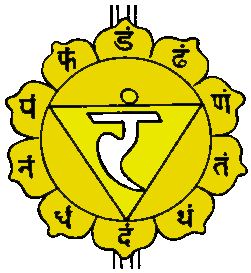
|
In the Indian Tantric tradition, the Manipura chakra, or "place of gems", is described as having ten petals, yellow in colour with a downward pointing triangle, representing the tattwa of fire. This chakra is traditionally located at the navel (hence the alternative name of nabhi (navel) chakra), but in many modern (especially Theosophical and New Age orientated) chakra formulations it is placed at the Solar Plexus. This latter however seems to refer to a distinct (minor) chakra - the Solar Plexus chakra. |
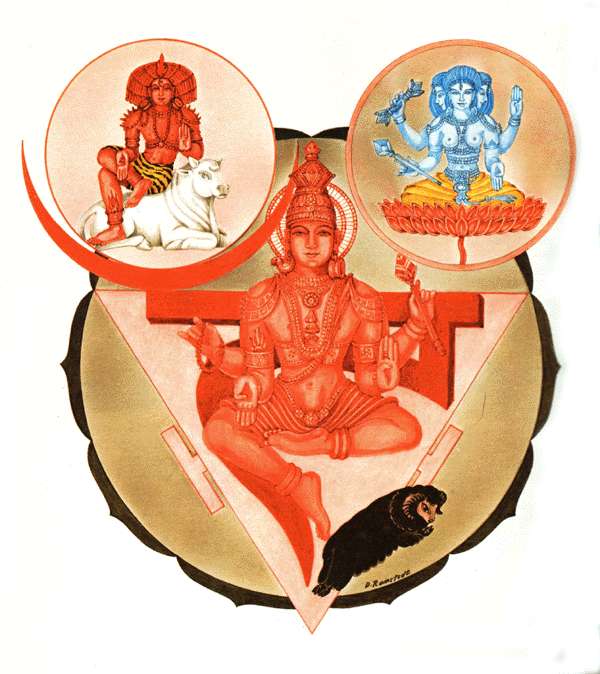 |
Clockwise
from the bottom:
|
| Terminology | Tantric | manipura, manipuraka, dashapatra, dashadala padma, dashapatrambuja, dashachchada, nabhipadma, nabhipankaja |
| Vedic (late Upanishads) | manipura, manipuraka, nabhi chakra | |
| Puranic | manipura, nabhi chakra | |
| Position | externally, navel region | |
| Petals | number | ten, arranged from right to left |
| colour | black, dark-green or dark-blue | |
| Matrika-letters | on petals | ten in number: Dang Dhang Nang Tang Thang Dang Dhang Nang Pang, Phang, arranged from right to left |
| colour | dark-blue, black, lightning-like | |
| Vrittis | on petals | ten in number, arranged from right to left |
| name | 1 spiritual ignorance; 2 thirst; 3jealousy; 4 treachery; 5 shame; 6 fear; 7 disgust; 8 delusion; 9 foolishness; 10 sadness | |
| In the pericarp | triangular 'fire'-region | |
| colour of the Fire Region | red, deep red | |
| Fire Bija in Fire Region | Rang | |
| colour of Fire-bija | red | |
| Form of Fire-bija | deity Vahni | |
| Concentration form of Vahni | Vahni is shining red; four-armed, holding a rudraksha rosary and a spear, and showing the gestures of granting boons and dispelling fear; seated on a ram | |
| In the bindu of Rang | deity Rudra | |
| Concentration form of Rudra | Rudra is red or white; three-eyed; two-armed, showing the gestures of granting boons and dispelling fear; seated on a bull | |
| Presiding divinity | power Lakini | |
| Concentration of Lakini | Lakini is black or dark-blue vermilion, pale-red, or deep red in colour; three-eyed, or three-faced with three eyes in each face; four-armed, holding Vajra and a spear, and making the gestures of granting boons and dispelling fear; or two-armed holding a noose and a goad, as showing the gestures of granting boon and dispelling fear; dressed in yellow raiment, or white raiment; seated on a red lotus | |
In addition to the front (navel) and rear (kidney) "Manipura" Centres, there is a third Centre, red in colour, located in the central "Thrusting Channel" that links the Perineal and Crown Chakras. In Tibetan Buddhism this centre is called the Wheel of Emanation (corresponding to the Nirmanakaya or manifest physical body), it is said to have sixty-four petals, a central triangle, and is the source of the Red Drop or Tumo that when activated ascends and unites with the descending White Drop in the central Heart Chakra. This centre links to the Pubic and Perineal chakras. It is not part of the normal microcosmic orbit, but is associated with higher yogic consciousness.
This centre is equivalent to what Barbara Brennan calls the Tan Tien, and describes it as the one note that holds our physical body in manifestation [Light Emerging, p.289]. She describes it as being one and a half inches below the navel - about the position of the Sea of Chicentre, and is linked downward to the molten core of the Earth. This inner Tan Tien or central Muladhara would in fact stand behind and suport the outer Tan Tien or Lower Elixar Field, just as the entire chakra system supports the physical body.
Perhaps it is this central Manipura or Lower Tan Tien centre that represents the red or Fire-polarity usually associated with the central part of the Tantric Manipura chakra; remember that in Tantra, the central and the rear chakra-series are confused.
Astrologically (in terms of the etheric body of the solar system), the planet or Celestial Sphere that links with the Manipura in the Geocentric astrological arrangement, is Venus, and hence the Lower Emotional Body. The spiritual philosopher Oscar Marcel Hinze, in his essay "Understanding Archaic Astronomy", relates Mercury to the Swadhisthana chakra (which however I would associate with the Moon), and Venus to the Manipura, which does match this association.
However, in the Heliocentric arrangement, the astrological planet or macrocosmic chakra associated with the Manipura is the Celestial Sphere of Mercury (again, not the same as the physical planet).
In addition to the front (navel) and rear (kidney) "Manipura" Centres, there is a third Centre, red in colour, located in the central "Thrusting Channel" that links the Perineal and Crown Chakras. In Tibetan Buddhism this centre is called the Wheel of Emanation (corresponding to the Nirmanakaya or manifest physical body), it is said to have sixty-four petals, a central triangle, and is the source of the Red Drop or Tumo that when activated ascends and unites with the descending White Drop in the central Heart Chakra. This centre links to the Pubic and Perineal chakras. It is not part of the normal microcosmic orbit, but is associated with higher yogic consciousness.
This centre is equivalent to what Barbara Brennan calls the Tan Tien, and describes it as the one note that holds our physical body in manifestation [Light Emerging, p.289]. She describes it as being one and a half inches below the navel - about the position of the Sea of Chicentre, and is linked downward to the molten core of the Earth. This inner Tan Tien or central Muladhara would in fact stand behind and suport the outer Tan Tien or Lower Elixar Field, just as the entire chakra system supports the physical body.
Perhaps it is this central Manipura or Lower Tan Tien centre that represents the red or Fire-polarity usually associated with the central part of the Tantric Manipura chakra; remember that in Tantra, the central and the rear chakra-series are confused.
Astrologically (in terms of the etheric body of the solar system), the planet or Celestial Sphere that links with the Manipura in the Geocentric astrological arrangement, is Venus, and hence the Lower Emotional Body. The spiritual philosopher Oscar Marcel Hinze, in his essay "Understanding Archaic Astronomy", relates Mercury to the Swadhisthana chakra (which however I would associate with the Moon), and Venus to the Manipura, which does match this association.
However, in the Heliocentric arrangement, the astrological planet or macrocosmic chakra associated with the Manipura is the Celestial Sphere of Mercury (again, not the same as the physical planet).